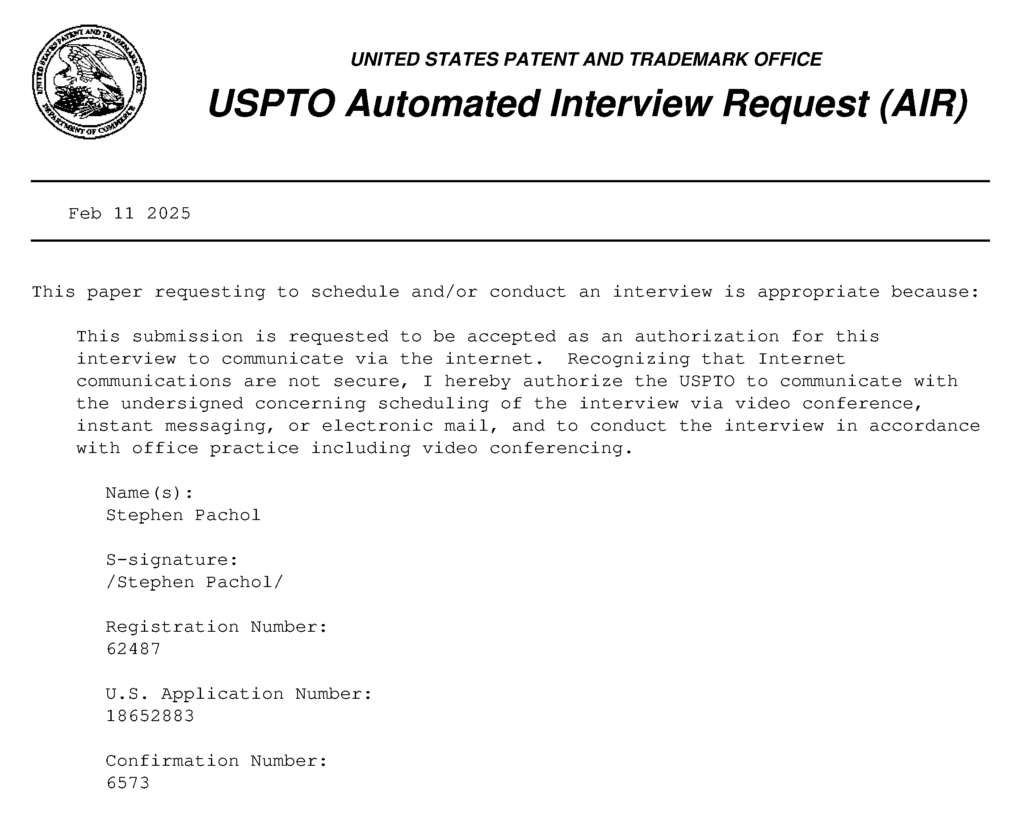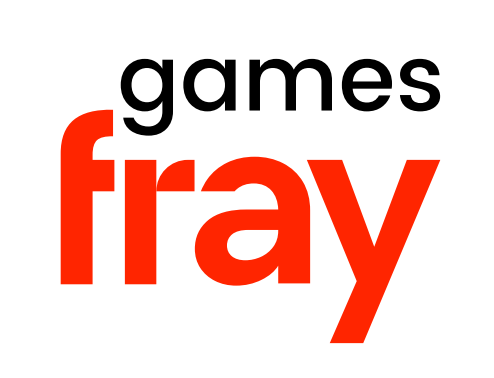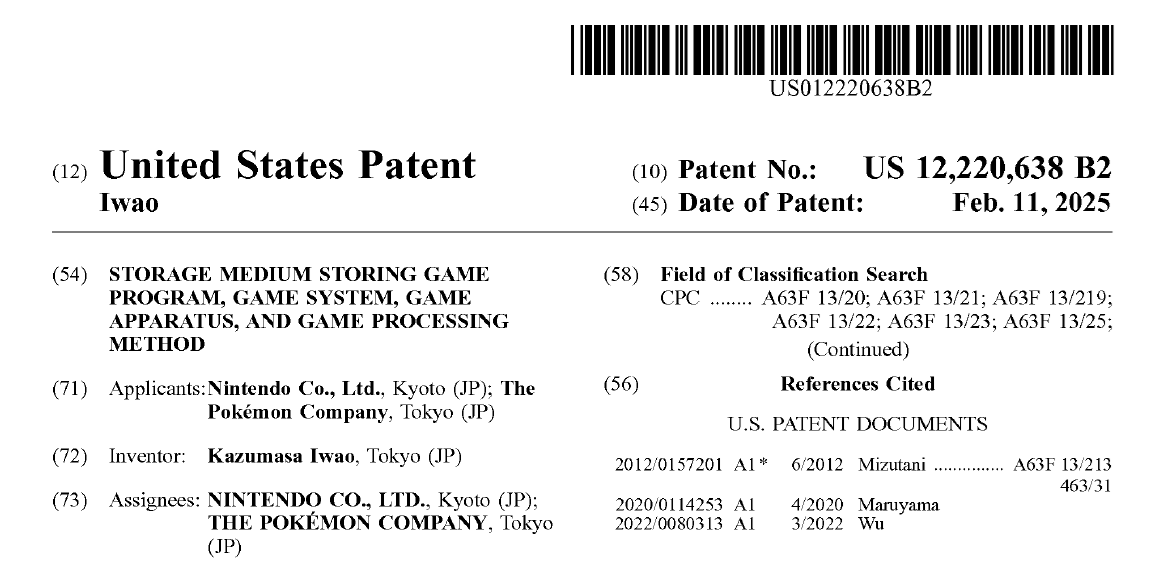Context: This is the fifth part of our “explain it to me like I’m five” series on Nintendo v. Pocketpair (the Pokémon-Palworld patent infringement dispute). Previous parts:
- Why Nintendo can sue Pocketpair over patents filed AFTER Palworld’s release
- Japanese patent attorney: Palworld doesn’t implement “smooth switching” of riding objects as claimed by Nintendo
- Two of Nintendo’s three patents-in-suit against Pocketpair relate to collecting characters: let’s look at the claims
- Nintendo grappling with hard choice after U.S. patent office overwhelmingly rejected anti-Palworld patent application
What’s new: Yesterday (February 11, 2025), different things happened:
- The United States Patent and Trademark Office (USPTO) published two new patents assigned to Nintendo and The Pokemón Company, one of which relates to capturing characters. They applied for that one after Palworld’s launch last year and which is from a patent family that is also being used against Pocketpair in the ongoing Japanese lawsuit.
- Nintendo and The Pokémon Company asked the patent examiner working on a different application (relating to the switching of riding objects) for an interview.
Direct impact: For now, Nintendo and The Pokemón Company have not brought any U.S. litigation against Palworld maker Pocketpair. They are not enforcing, but they are prosecuting, which in patent lingo means that they file and pursue patent applications in order to build an arsenal of patents. If they find that they cannot obtain any useful patents in the U.S., they will not bring a patent lawsuit there. But if they believe they have an infringement theory that could succeed in court, then it might happen, given that the U.S. is a huge market. In that case, however, Pocketpair can not only argue that there is no infringement, but it can also challenge the validity of those patents.
Wider ramifications: The USPTO grants Nintendo and The Pokémon Company patents on game rules, which are however patent-ineligible (i.e., something that the patent system is not meant to protect), especially under the Alice case law by the Supreme Court of the United States.
Nintendo and The Pokémon Company have been filing for U.S. patents for many years. That is not a new habit only because of Palworld. But there has been some patenting activity by those affiliated (connected) companies lately that is plausibly attributable to Nintendo’s “beef” with Pocketpair over Palworld. It won’t be purely coincidental that they apply for U.S. patents that are clearly related to the Japanese litigation, much less if they do so after Palworld’s launch but by claiming priority to older applications as explained in the first part of this article series (see the list of articles further above).
Those who are not familiar with patent law may wonder why they even need U.S. patents given that it is a dispute between two Japanese companies. That is so because patents are territorial rights. A U.S. patent can be used against products sold or services operated in the U.S., and a Japanese patent against products sold or services operated in Japan.
There are some special situations in which patent infringement may involve different territories. For example, if the game is sold in Japan, played in Canada and the gameplay server is in the United States, that could lead to complicated questions. But for the purposes of this Pokémon-Palworld dispute let’s just focus on the simple scenario: a game is sold in a given country, and only a patent that was granted by the patent office of that particular country can be used against it. Nintendo and The Pokémon company have the right to obtain U.S. patents just like Microsoft, for example, can obtain protection in Japan for any of its Xbox-related inventions.
Nintendo has recently received two U.S. patents that are related to the Palworld dispute in Japan. And it is trying to get another patent that is related to the Japanese dispute, so they have just asked the USPTO for a meeting.
U.S. Patent No. 12,179,111 (December 31, 2024)
Before we talk about the one that was published yesterday, let’s look at one that was already published on New Year’s Eve. We can find that one on Google Patents. It’s U.S. Patent No. 12,179,111.
On that Google Patents page you can see that the application was filed by Nintendo and The Pokémon Company on May 2, 2024. That was a few months after Palworld’s launch. The application was published on August 22, 2024. But an application could still fail, so what matters is when the patent is actually granted. That was the case as per December 31, 2024, though Nintendo and The Pokemón Company were already told on November 4, 2024 that they would get the patent. That happened in the form of an Office action called “notice of allowance.” It’s a decision by the patent examiner, but some more formalities are needed for the patent to come into existence. It must be published in the patent register.
If Pocketpair has people, internally and/or externally, watching Nintendo’s and The Pokémon Company’s patenting activity, then they could already see in early November that this patent was going to be granted. The prosecution file is publicly accessible. Patents are pretty transparent.
The name of the game is the claim. It’s the patent claims (each of which can be asserted independently of the others) that define the scope of a patent. You don’t need to read and understand the claim language below as we will explain it in simple terms right after showing it to you:
1. A non-transitory computer-readable storage medium having stored therein a game program that when executed by a computer of an information processing apparatus, causes the computer to perform operations comprising:
generating data for display of a player character and a field character disposed on a field in a virtual space;
based on a received direction input, determining an aiming direction in the virtual space; and
in a first mode in which a plurality of catching items, associated with a first category, are selectable,
generating data for display of a first aiming point;
selecting a catching item, from the plurality of catching items, by performing a first operation input;
generating data for display of the player character launching, in the aiming direction, the catching item, selected from the plurality of catching items, for catching the field character on the field, based on a second operation input, and when the launched catching item hits the field character, performing successful-catch determination relating to whether or not the catching is successful;
when a result of the successful-catch determination is positive, setting the field character hit by the catching item in a player’s possession; and
generating data for display of setting the field character, hit by the catching item, in the player’s possession, and
in a second mode in which a plurality of fighting characters, associated with a second category, are selectable,
generating data for display of a second aiming point;
selecting a fighting character, from the plurality of fighting characters, by performing a third operation input;
generating data for display of the player character launching, in the aiming direction, a fighting character selected from the plurality of fighting characters; and
generating data for display of the field character and the fighting character starting fighting against each other on the field.
So this is about a first mode and a second mode. The first mode is that you pick a “capture item” like a ball, and the second (alternative) mode is that you unleash a fighting character. If you use a capture item (first mode) and successfully catch a field character (a character that is out there for the taking), your character (the player character) owns it. If you use a fighting character, it will pick a fight with the field character.
Nintendo and The Pokémon Company are indeed using two such patents (both from the same family, meaning that they go back to the same original invention) against Pocketpair in Japan (February 6, 2025 games fray article). Only because Nintendo and The Pokémon Company say that Palworld infringes doesn’t mean that it actually does. There is a lot to be discussed in a patent infringement litigation before someone wins. To give just one example of what could be a get-out-of-jail-free card for Pocketpair (because a Japanese patent attorney who blogs about the dispute also noted it): there may not even be a strict distinction between a first mode and a second mode in Palworld.
In December, Pocketpair released a Palworld update and games-specialized media started talking about whether certain changes could have something to do with the patent dispute. Polygon wrote on December 10, 2024: “Palworld update changes some Pokémon-like throwing mechanics following Nintendo lawsuit”
Should those speculating about a connection be right, then Nintendo’s U.S. Patent No. 12, 179,111 did not yet exist at the time of that update, but based on the November 4, 2024 notice of allowance it was clear that the patent would be granted not much long thereafter.
Now let’s turn to the one that was published yesterday. As noted further above, Nintendo and The Pokémon Company actually got two new patents just yesterday, but one goes back to a pre-Palworld application and covers costumes lying around in a game, which is not relevant here as far as we can see. But the other one is interesting.
U.S. Patent No. 12,220,638 (February 11, 2025)
That one is so new that Google Patents doesn’t list it yet. We have, however, downloaded it from the website of the USPTO:
The application for this one was filed on July 18, 2024. It goes back to one of those December 22, 2021 applications that the Japanese patents-in-suit also hark back to.
The “family relationship” is that the July 2024 application is a divisional of the May 2, 2024 application (no. 18/652,874) that led to the patent discussed in the section above. And that one was not an original application but a continuation of a December 2021 application, with the continuation application having been filed in September 2022.
Don’t worry about the terms “divisional” and “continuation” too much. They are underlined, as are many other patent law terms here, so you can look up our definitions in games fray‘s IP Lingo dictionary. You can simply assume that both are different ways (with divisionals being a universal thing while continuations are a very U.S.-specific concept) of filing new patent applications based on older ones.
As always, we have to look at the claims. Claim 1 is typically the broadest one, which means that it is shorter than the others. Again, you don’t have to read and try to understand it, but we show this to you just in case you care to read that part. We will explain it subsequently.
1. A method for game processing implemented via an information processing system having at least one processor, the method comprising:
generating data for display of a player character and a first virtual character disposed in a virtual space;
determining an aiming direction based on a direction input; and
in association with the player character performing a first game action:
generating data for display of a first aiming point associated with the aiming direction;
generating data for display of an indicator indicating a likelihood of success of the player character obtaining the first virtual character;
selecting an obtaining item, from a plurality of obtaining items, by performing a first operation input;
generating data for display of the player character launching, in the aiming direction, the obtaining item for obtaining the first virtual character in the virtual space, based on a second operation input;
determining obtaining of the first virtual character, by the player character, as successful in association with the obtaining item arriving with a vicinity of the first virtual character; and
generating data for display of setting the first virtual character as being in possession by the player character in association with determining the first virtual character as successfully obtained, and
in association with the player character performing a second game action:
generating data for display of a second aiming point associated with the aiming direction;
generating data for display of the player character launching, in the aiming direction, a first virtual object representing the obtained first virtual character, based on a third operation input; and
generating data for display of the first virtual character and a second virtual character starting fighting against each other in the virtual space.
What this claim covers is very similar to the one we showed in the first section. They use some different terminology here (“virtual character” instead of “field character” and “obtaining item” instead of “catching item”). There’s also a reference to the display of the probability of a catching operation.
Similarly to what Japanese patent attorney Ryo Arashida observed with respect to some patent filing activity in Japan, this patent is apparently also designed to avoid the distinction between a “first mode” and a “second mode.”
When Nintendo and The Pokémon Company filed for this patent application in July 2024, they knew the original Palworld, which was already about six months old. But they did not know the changes that Pocketpair made to Palworld in December 2024.
It is too early for us to take a position on whether Nintendo can actually get any value out of those two recent U.S. patents on catching characters and launching fighting characters. Should Nintendo sue Pocketpair in the U.S. as well, then we’ll look at their specific allegations and form an opinion.
U.S. Patent Application No. 18/652,883: Nintendo and The Pokémon Company request interview with patent examiner
We were wondering how Nintendo and The Pokémon Company would deal with the fact that the USPTO would grant them one claim (out of 23) from a certain patent application if they removed the other claims (February 8, 2025 games fray article).
That patent relates to the smooth switching of riding objects (meaning that the player character may be riding a flying character one second and a horse-like character on the ground the next). The above-mentioned Japanese patent attorney has serious doubts that Palworld actually infringes such a patent (January 26, 2025 games fray article).
Yesterday, Nixon Vanderhye’s Stephen Pachol, a patent attorney representing Nintendo and The Pokémon Company, requested an interview with the patent examiner:

The purpose of such an interview could be that Mr. Pachol wants to persuade the examiner that more claims than only one out of the 23 should be granted. It could also be that the actual plan is to then agree with the examiner that the allowable claim will be granted quickly if Nintendo separates it (by way of a continuation) from the claims that the patent examiner believes are not patentable.
Nintendo and The Pokémon Company are clearly not giving up. They want to enable their client to go to war in the U.S., though it is another question whether that will actually happen. We will keep an eye on Nintendo’s activities in the U.S. because they are clearly spending time and money on patent applications that they filed after Palworld’s launch.

